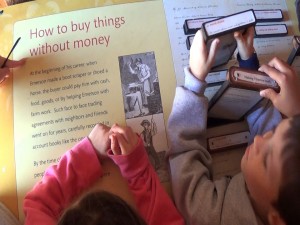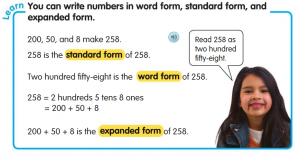Posted by kavery508 | Posted in Uncategorized | Posted on September 21, 2015
A big part of teaching kids to care is teaching them about empathy. When kids use empathy, they should “read” someone’s face to understand how heorshe feels, and respond accordingly. This does not always happen automatically! As a team effort, Health teacher Mrs. McDonald and School Counselor Ms. Demoga are joining me in teaching our kids the ins-and-outs of interpersonal relationships. What happens when you see someone feeling uncomfortable? Are you doing anything to cause it? What happens when you feel that way? Can you solve it (using strategies we’re teaching) on your own? When is it time to get a grownup involved? We’ll revisit these questions all year long as the complex nature of kids’ social and emotional interactions deepen.
(Source: KidsTV123 via Youtube)
 There are still openings available for chaperones on our field trip to Old Sturbridge Village on October 16!The time commitment is 8:45-2:45. Please contact me if you can help out, and see last week’s blog post for information on the CORI background check required of all chaperones.
There are still openings available for chaperones on our field trip to Old Sturbridge Village on October 16!The time commitment is 8:45-2:45. Please contact me if you can help out, and see last week’s blog post for information on the CORI background check required of all chaperones.
 A few times this year, I’ll be asking for your help to keep our classroom healthy. This includes donations of bandaids, Kleenex, antibacterial wipes, and hand sanitizer. At this time, we only need hand sanitizer. Please send in a bottle for classroom use–the bigger, the better! Thanks!
A few times this year, I’ll be asking for your help to keep our classroom healthy. This includes donations of bandaids, Kleenex, antibacterial wipes, and hand sanitizer. At this time, we only need hand sanitizer. Please send in a bottle for classroom use–the bigger, the better! Thanks!
Homework update: 1) Math homework begins next week, 9/28. There will be nightly assignments, M-Th, and 2 optional challenges weekly. There will be a separate math homework folder that should be returned daily, like the green communication folder. More to come on that on next week’s blog! 2) Reading and spelling homework begin the week after, 10/5. 3) Math Facts homework starts the week after that, 10/12. 4) In addition, students who need more practice with handwriting (forming letters correctly; writing in lowercases; writing letters and numbers without reversing them) will bring home short assignments.
 Our Daily 5 CAFE focus this week is on activating schema and making connections when we read (part of Comprehension). These are HUGE strategies for young readers. Schema is what a reader understands about anything in life. We have schema about topics like making friends, seasons of the year, and so on. We also have schema for how to solve problems, and how we approach reading. Sometimes our schema is correct and sometimes it contains misunderstandings, which we learn to correct by reading and thinking. We therefore teach young readers to recognize what their schema is telling them and to use it as an access point to understanding what is read by making connections to it. Questions to ask your child during reading (either aloud to him/her or when s/he is reading): What do already know about ____ and what do you wonder? What does that remind you of in your life? This kind of thinking can help students understand characters, plot, and information better. More info is at Reading Rockets, a terrific literacy site for teachers and parents: http://www.readingrockets.org/article/29200/
Our Daily 5 CAFE focus this week is on activating schema and making connections when we read (part of Comprehension). These are HUGE strategies for young readers. Schema is what a reader understands about anything in life. We have schema about topics like making friends, seasons of the year, and so on. We also have schema for how to solve problems, and how we approach reading. Sometimes our schema is correct and sometimes it contains misunderstandings, which we learn to correct by reading and thinking. We therefore teach young readers to recognize what their schema is telling them and to use it as an access point to understanding what is read by making connections to it. Questions to ask your child during reading (either aloud to him/her or when s/he is reading): What do already know about ____ and what do you wonder? What does that remind you of in your life? This kind of thinking can help students understand characters, plot, and information better. More info is at Reading Rockets, a terrific literacy site for teachers and parents: http://www.readingrockets.org/article/29200/
 The math focus this week is all about numbers: how to understand them using their place value; how to recognize and identify them in standard, word, and expanded form; and how to add/count by 1s, 10s, and 100s by understanding the value of each digit. It is especially important that students develop an understanding of the hundreds, tens, and ones involved in these numbers. They will engage in various activities with base ten blocks, base ten pictures, and with written numbers. For practice at home, I recommend the online learning games (also available as an app) at ABCYa.com. Link to the Numbers category here, then select Base 10 Fun; Base 10 Bingo; and/or Base 10 Blocks (especially helpful for kids still learning to represent and count big numbers).
The math focus this week is all about numbers: how to understand them using their place value; how to recognize and identify them in standard, word, and expanded form; and how to add/count by 1s, 10s, and 100s by understanding the value of each digit. It is especially important that students develop an understanding of the hundreds, tens, and ones involved in these numbers. They will engage in various activities with base ten blocks, base ten pictures, and with written numbers. For practice at home, I recommend the online learning games (also available as an app) at ABCYa.com. Link to the Numbers category here, then select Base 10 Fun; Base 10 Bingo; and/or Base 10 Blocks (especially helpful for kids still learning to represent and count big numbers).
Another important skill with which students struggle at first is finding the missing addend or minuend/subtrahend (algebraic thinking). For example, they will be asked to solve problems such as ____ – 20 = 351, or 268 + ____ = 288. Even solving these up to 10 or 20 can be hard at first ( 9 + ____ = 15, etc.) I recommend going to GregTangMath.com for practice. Select the Missing Numbers game, and work your way up through easy and hard addition and subtraction. As with all of his games, the short length of each round can be misleading: it’s meant to provide quick gratification and feedback while discouraging fatigue. However, when you play, shoot for a time-related goal (e.g. 10 minutes or more total). When kids are done they’ll have solved tens of computational problems, if not more!










